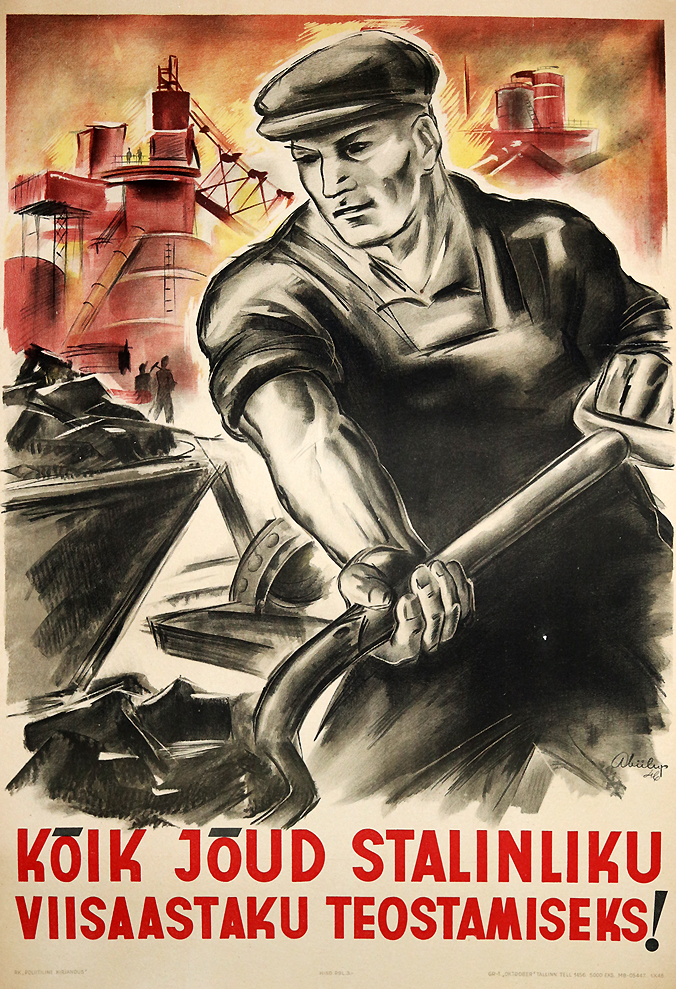
¡Todas las fuerzas deben cumplir el plan quinquenal estalinista!
Número de Cartel: PP 1071
Información sobre el cartel: The new Five-Year Plan was announced at the start of 1946 and was the first Five-Year-Plan since the onset of World War II. Its economic program called for concentration in heavy industry and more military technology in addition to pushing Soviet scientists to surpass Western dominance.
Tamaño: 35x25
Tipo de cartel: Litografía
Fecha de publicación: 1946
Información técnica: Oktoober Printers telephone 1456; Price 3 rubles.
Ediciones: 5,000
Número de Glavlit: MB-05447
En el catologo: PP 1071 Economy b
Región de la URSS: RSS de Letonia
Idioma: Letón
Artista: Viilup, Aleksei — Виилуп, Алексей
Aleksei Viilup designed exhibitions, engaged in portrait and decorative paintings and, he excelled in the design of posters. He was born in the town of Valga in southern Estonia. During the period of the 1930s until about 1940, a surge of interest in the graphic arts blossomed in Estonia. Works created in this period often used moderate elements of nationalism accompanied by strong composition. Viilup's chief interest was art and he graduated in 1941 from the state-run ...
Leer más...
Imprenta: Oktoober (October) Printers, [Tallinn, Estonia] — Октябрьская Полиграфия, [Таллинн, Эстония]
Prior Estonia becoming a Republic of the USSR in 1940, there were approximately 100 independent printers in the nation. Under Soviet control, all printing and publishing industries were reorganized into a state monopoly. Oktoober Printing was one of roughly 18 state-controlled printers in the Estonian SSR. In 1973, the General Government of the Printing Industry was liquidated and in its place, the Estonian Printing Industry Production Association was formed. It took-in the various printing houses, including Oktoober.
Leer más...
Editorial: Poliitiline Kirjandus (Political Literature) Publishing, Estonia — Издательство Политической Литературы
Political Literature Publishing was formed in Tallinn, the capital of the Estonian Soviet Socialist Republic. Political Literature was also part of the state-controlled publishing monopoly developed by the Soviet Union in September 1940 in order to reorganize publishing via the Estonian State Publishing Center, which combined five publishing entities. Political Literature chiefly produced socio-political material in addition to the magazines "Bolshevik" and "Young Lenin". In 1949, Political Literature Publishing was merged under the ...
Leer más...